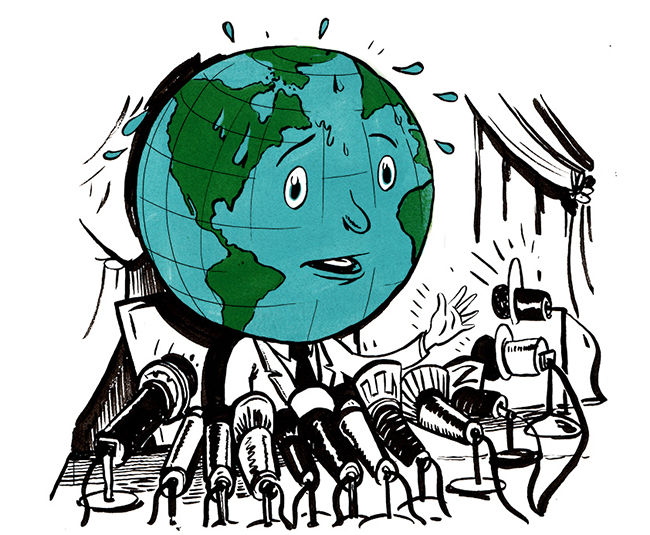ZEITGUIDE TO WATER

ZEITGUIDE “GLOBAL CRISIS” IMAGE BY KRISTOFER PORTER
How scared should we be about running out of fresh water one day?
In California, they are hitting the panic button. Farmers aren’t planting. Reservoirs are low. There are reports of “water theft” around the state and black markets for water. The mayor of Los Angeles has asked residents to cut back another 20% on their water use, and may further restrict landscape and lawn irrigation. There’s also the possibility of rationing by the Metropolitan Water District of Southern California, which divvies up the water imported from the north.
The paradox of water access is that it’s both a local and a global problem. California’s drought doesn’t cause water prices to spike in the Midwest. At the same time, water shortage causes geopolitical instability. In Syria, drought is causing hundreds of thousands of farmers to migrate to cities, where those that are under 40 are prone to join extremist groups, according to a recent Pentagon report.
In the big picture, though, progress is being made.
Huge reductions to water use have come from industrial improvements, including better irrigation at massive farms and new power plants that use 75% less water for cooling. Large corporations like Coca-Cola improved their water efficiency by 20% from 2004 to 2012. Campbell pledged last year to “reduce water use per pound of ingredient by 20%” by 2020. This need for better water management has also led to an innovative wave of new startups joining the $600 billion CleanTech water industry long dominated by legacy companies like GE and Siemens. In Los Angeles many are joining the “Fake Grass Movement” and replacing their lawns with water soluble artificial turf.
Charles Fishman, author of The Big Thirst, gives us another reason to be optimistic: Water can always be cleaned and reused. We never “use it up.” Delivering sufficient water is largely a matter of better managing the supply.
Future gains will come down to smart management and better technology. The United States uses less water today than it did in 1970, even as the population has increased by 70 million.
In less developed parts of the world, of course, the needs are different. One out of every seven people doesn’t have access to safe drinking water, but programs such as Charity Water are tackling the problem with drilling and filtering technology tailored to the environment. Since 1990, about 1 billion people have gained access to clean water, says Zeitguide friend Christoph Gorder, the charity’s Chief Global Water Officer. He believes that in our lifetime “everyone’s going to have clean water.”
We’ll drink to that.
Keep learning,
Brad Grossman and Team ZEITGUIDE
